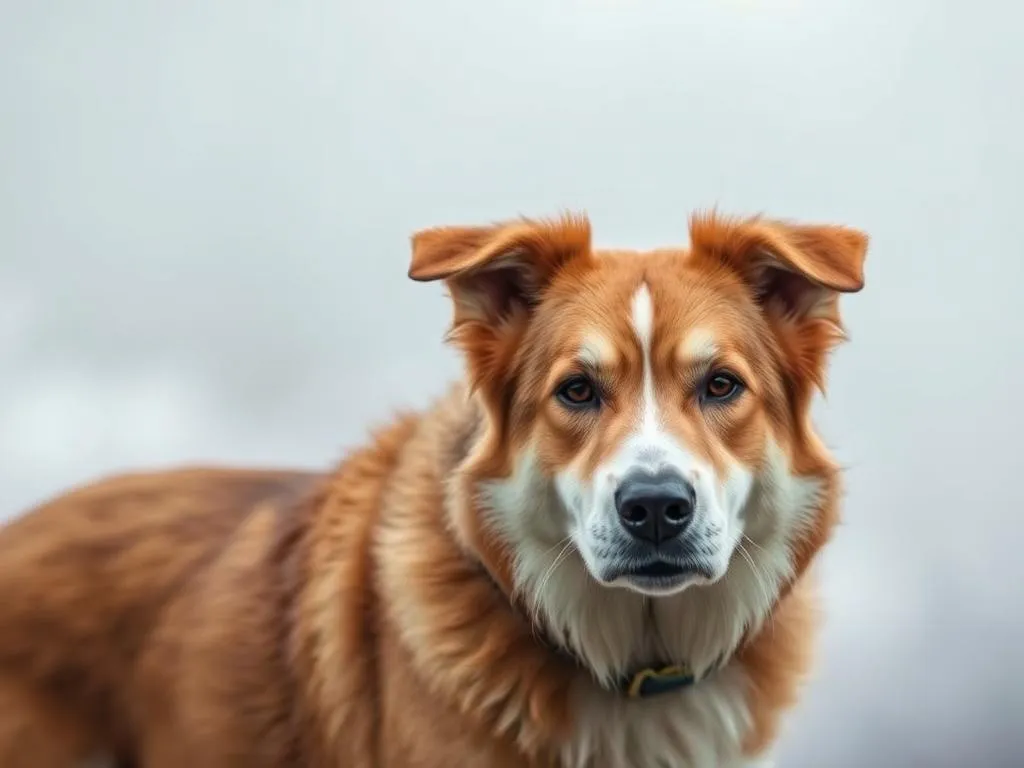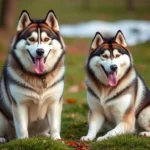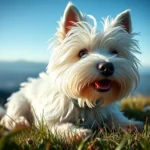
Mountain dog breeds are a unique group of canines that have adapted to the rugged and often harsh conditions of mountainous terrains. These breeds possess inherent characteristics that enable them to thrive in environments characterized by steep slopes, cold climates, and variable weather patterns. Understanding these breeds is essential for anyone considering a mountain dog, as they often come with specific needs and attributes that make them suitable for certain lifestyles.
What Are Mountain Dog Breeds?
Definition
Mountain dog breeds are typically large, sturdy dogs that were developed in mountainous regions primarily for working purposes. These breeds are known for their strength, endurance, and ability to perform various tasks, such as herding livestock, guarding property, and assisting with search and rescue operations. They are distinguished from other breeds by their physical build, temperament, and adaptability to cold and rugged environments.
Historical Context
The evolution of mountain dog breeds can be traced back to their roles in assisting humans in challenging terrains. Historically, these breeds were bred for specific functions, such as:
- Herding: Many mountain dog breeds helped shepherds manage their flocks in high altitudes.
- Guarding: Their protective nature made them excellent guardians of livestock and property against predators.
- Rescue Work: Some breeds have been trained for rescue operations in snowy or treacherous conditions.
These historical roles have shaped the characteristics we see in mountain dog breeds today.
Characteristics of Mountain Dog Breeds
Physical Traits
Mountain dog breeds are often characterized by their robust physical traits, which include:
- Size and Weight: These dogs are typically large, with weights ranging from 70 to over 150 pounds, depending on the breed. Their size helps them navigate rugged terrain and provides them with the strength needed for work.
- Coat Types and Colors: Most mountain dog breeds have thick, double coats that provide insulation against cold weather. Common coat colors vary by breed but can include shades of black, brown, and white.
- Distinctive Features: Many have unique physical traits, such as large, floppy ears, bushy tails, and strong, muscular builds, which are necessary for their working roles.
Temperament
The temperament of mountain dog breeds is generally characterized by:
- Loyalty: They are known for their devotion to their families and can be protective of their loved ones.
- Protectiveness: Mountain dogs often have strong guarding instincts, making them excellent watchdogs.
- Calmness: Most breeds exhibit a calm demeanor, especially when they have a job to do or are given ample exercise.
However, temperament can vary among breeds, so it’s essential to research individual traits.
Adaptability
Mountain dog breeds are designed to thrive in rugged environments. Their adaptability includes:
- Climate Resilience: These dogs can tolerate cold temperatures, making them well-suited for mountainous areas.
- Terrain Navigation: Their strong legs and powerful bodies allow them to traverse difficult landscapes effectively.
When considering a mountain dog breed, it’s essential to evaluate whether your living environment aligns with their needs.
Popular Mountain Dog Breeds
Bernese Mountain Dog
The Bernese Mountain Dog is a gentle giant known for its affectionate nature and striking tri-color coat. This breed is often used as a family companion and excels in various roles, including therapy and search and rescue.
- Common Health Issues: They are prone to conditions such as hip dysplasia and certain cancers.
- Ideal Living Conditions: Bernese Mountain Dogs thrive in homes with plenty of space and a yard for play, making them suitable for families.
Great Pyrenees
The Great Pyrenees is a majestic breed known for its impressive size and thick white coat. Historically, these dogs served as livestock guardians, protecting sheep from predators.
- Role as a Livestock Guardian: Their natural instincts make them excellent guardians; they are protective yet gentle.
- Training and Socialization: Early socialization is crucial, as they can be wary of strangers.
Saint Bernard
The Saint Bernard is perhaps one of the most famous mountain dog breeds, known for its incredible size and gentle temperament. Originally bred for rescue work in the Swiss Alps, these dogs are large and powerful.
- History and Background: Their historical role as rescue dogs has given them a significant cultural status.
- Physical Requirements: They require regular exercise and grooming to maintain their health and coat.
Anatolian Shepherd Dog
The Anatolian Shepherd Dog is known for its independence and strength. This breed is primarily used for guarding livestock, particularly in rural areas.
- Working Abilities: They have strong protective instincts and require consistent training.
- Compatibility with Other Pets: Early socialization is important for compatibility with other animals.
Tibetan Mastiff
The Tibetan Mastiff is a unique breed with a rich history in Tibetan culture. Known for its impressive size and protective nature, this breed is often used as a guardian.
- Unique Traits: They have a thick double coat and a strong-willed personality.
- Temperamental Considerations: They require experienced handlers due to their strong independence and guarding instincts.
Choosing the Right Mountain Dog Breed for You
Assessing Your Lifestyle
When considering a mountain dog breed, it’s crucial to assess your lifestyle. Factors to consider include:
- Space: Mountain dogs require ample space, both indoors and outdoors.
- Activity Level: These breeds usually need regular exercise to stay healthy and happy.
- Family Dynamics: Consider how the breed will fit into your family structure, especially if you have children or other pets.
Compatibility with Environment
The environment plays a significant role in choosing the right breed. Consider:
- Urban vs. Rural Living: Some mountain dogs can adapt to urban settings if given enough exercise, while others prefer rural environments where they can roam.
- Outdoor Access: Ensure you have adequate outdoor space for exercise and play, as these breeds thrive with regular physical activity.
Research and Preparation
Before bringing home a mountain dog, it’s essential to do thorough research. Resources for learning about specific breeds include:
- Books and Articles: Look for reputable sources that focus on breed characteristics and care.
- Visiting Breeders or Shelters: Meeting potential dogs in person can provide valuable insight into their temperament and needs.
Care and Maintenance of Mountain Dog Breeds
Nutrition
Proper nutrition is vital for maintaining the health of mountain dog breeds. Key considerations include:
- Dietary Needs: These dogs often require a diet rich in protein to support their active lifestyles.
- Importance of High-Quality Dog Food: Investing in quality dog food can significantly impact their energy levels and overall health.
Exercise Requirements
Regular exercise is essential for mountain dog breeds. General exercise needs include:
- Overview of Exercise Needs: Most breeds require at least one hour of exercise each day.
- Recommended Activities: Long walks, hiking, and playtime in a secure yard are excellent ways to keep these dogs active.
Grooming and Health Care
Grooming needs can vary significantly among mountain dog breeds:
- Grooming Needs: Many of these breeds have thick coats that require regular brushing to prevent matting and reduce shedding.
- Common Health Issues: Be aware of breed-specific health problems and schedule regular veterinary check-ups.
Training and Socialization
Early Training Techniques
Training is crucial for mountain dog breeds to ensure they become well-adjusted companions. Early training techniques to consider include:
- Importance of Early Training: Start training as soon as you bring your dog home.
- Recommended Training Methods: Use positive reinforcement and consistency to encourage good behavior.
Socialization Tips
Socialization is vital for mountain dog breeds to help them adapt to various environments. Effective socialization tips include:
- How to Socialize: Gradually expose your dog to different people, pets, and environments.
- Importance of Exposure: Early socialization can prevent behavioral issues later in life.
Advanced Training Considerations
Many mountain dog breeds have the potential for advanced training. Consider:
- Potential for Advanced Training: These breeds can excel in obedience, agility, and even working roles.
- Working Roles: Some breeds are naturally suited for specific jobs, such as search and rescue or therapy work.
Conclusion
Understanding mountain dog breeds is essential for anyone considering adding one of these remarkable dogs to their family. Their unique characteristics, from their physical traits to their temperament, make them suitable for specific lifestyles and environments. Responsible ownership and care will ensure that you and your mountain dog can enjoy a fulfilling and happy life together.
FAQs about Mountain Dog Breeds
-
What are mountain dog breeds?
Mountain dog breeds are large, sturdy dogs bred for work in mountainous terrains, known for their strength and adaptability. -
Do mountain dog breeds require a lot of exercise?
Yes, most mountain dog breeds need regular exercise to stay healthy and happy. -
Are mountain dog breeds good with children?
Many mountain dog breeds are known for their gentle and protective nature, making them good family companions when properly socialized. -
What should I consider before getting a mountain dog?
Assess your lifestyle, space, activity level, and compatibility with the breed’s needs. -
How do I care for a mountain dog?
Provide a balanced diet, regular exercise, grooming according to their coat type, and routine veterinary care to maintain their health.
By understanding the specifics of mountain dog breeds, potential owners can make informed decisions that benefit both them and their future canine companions.









